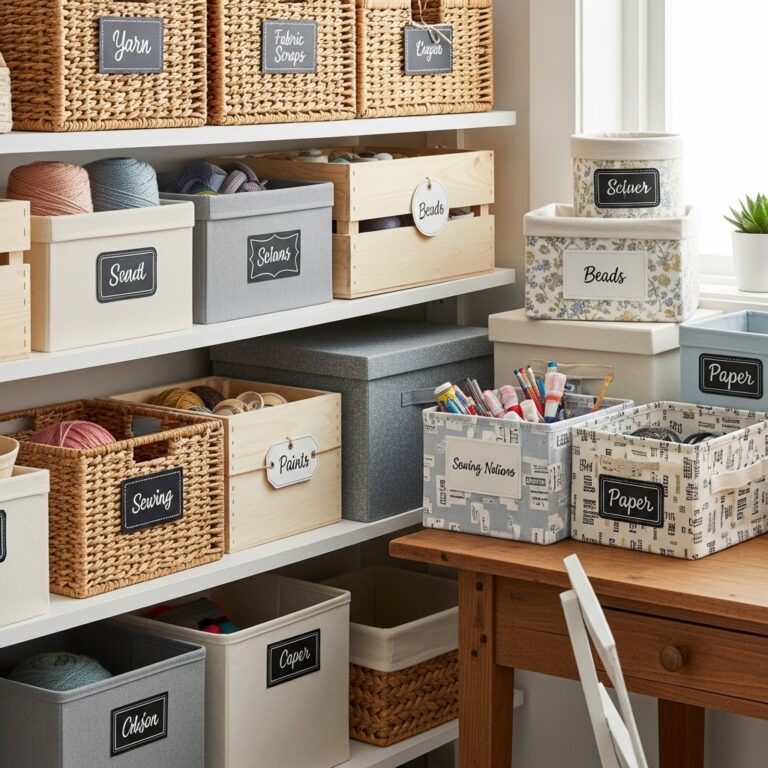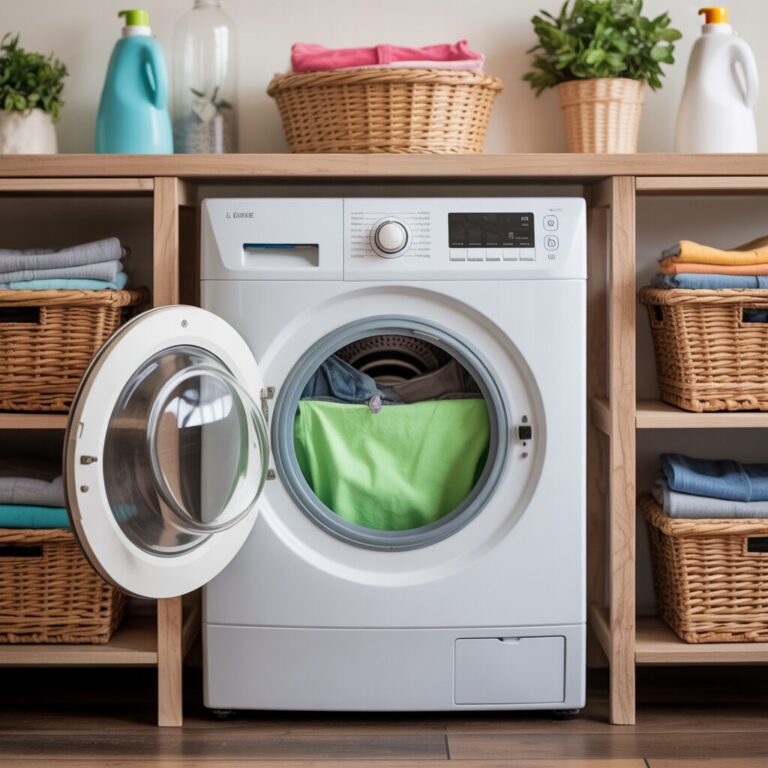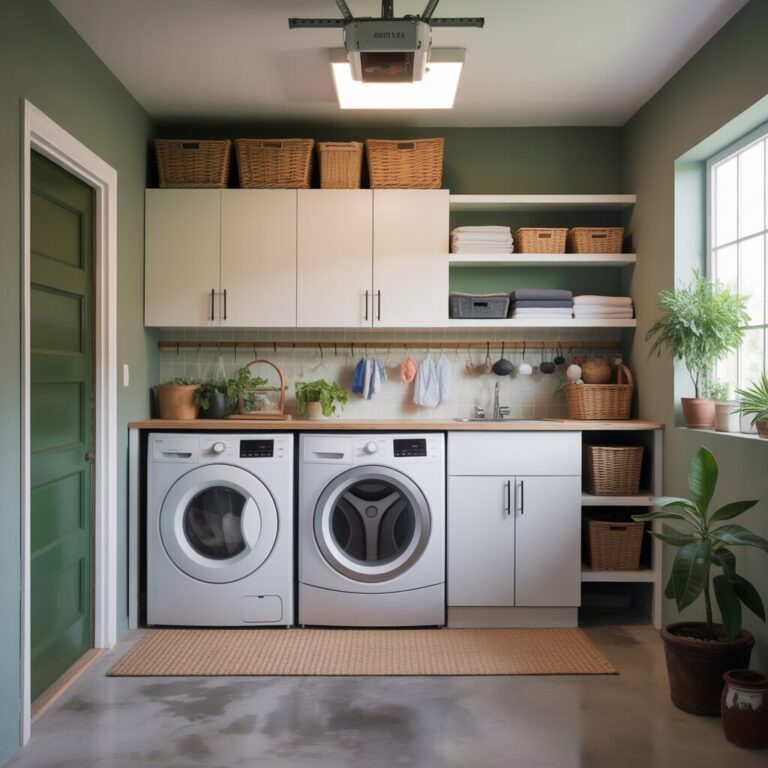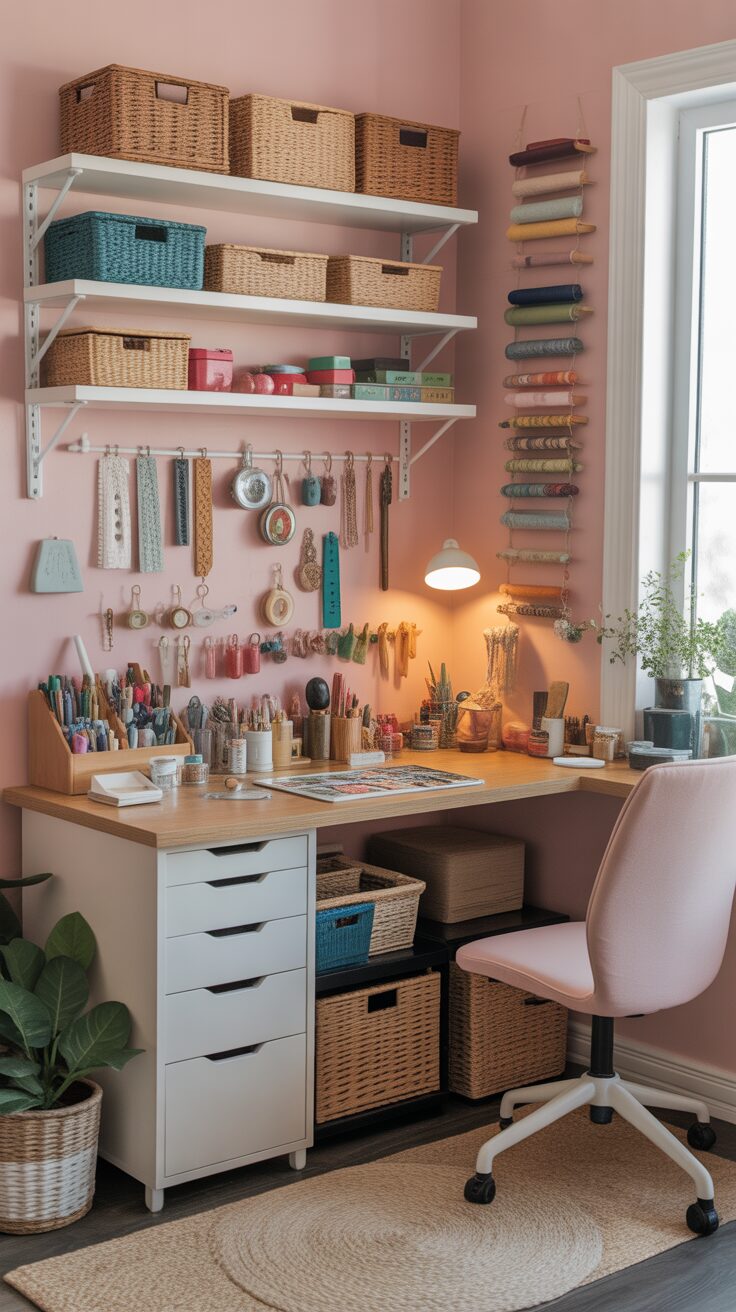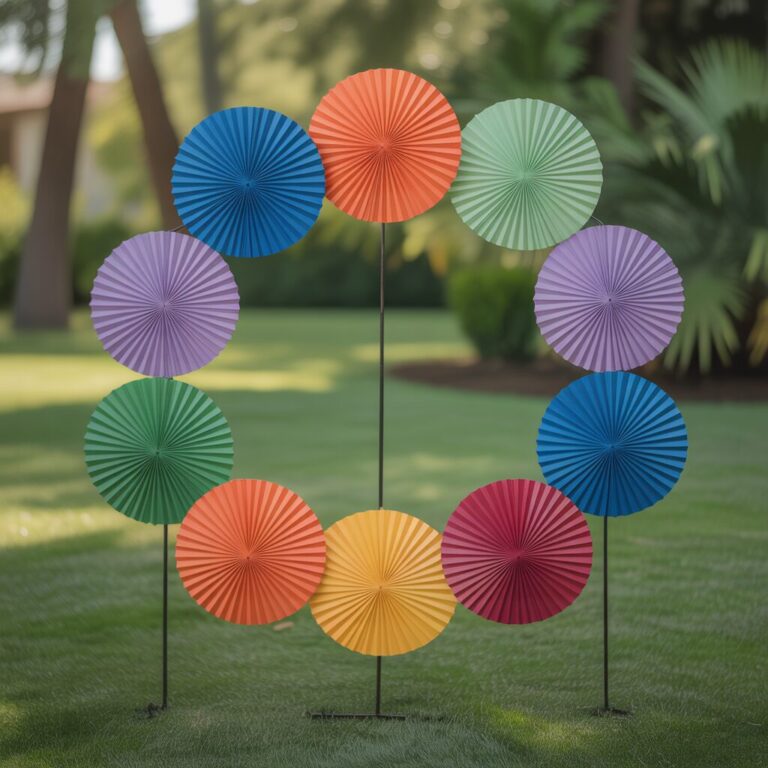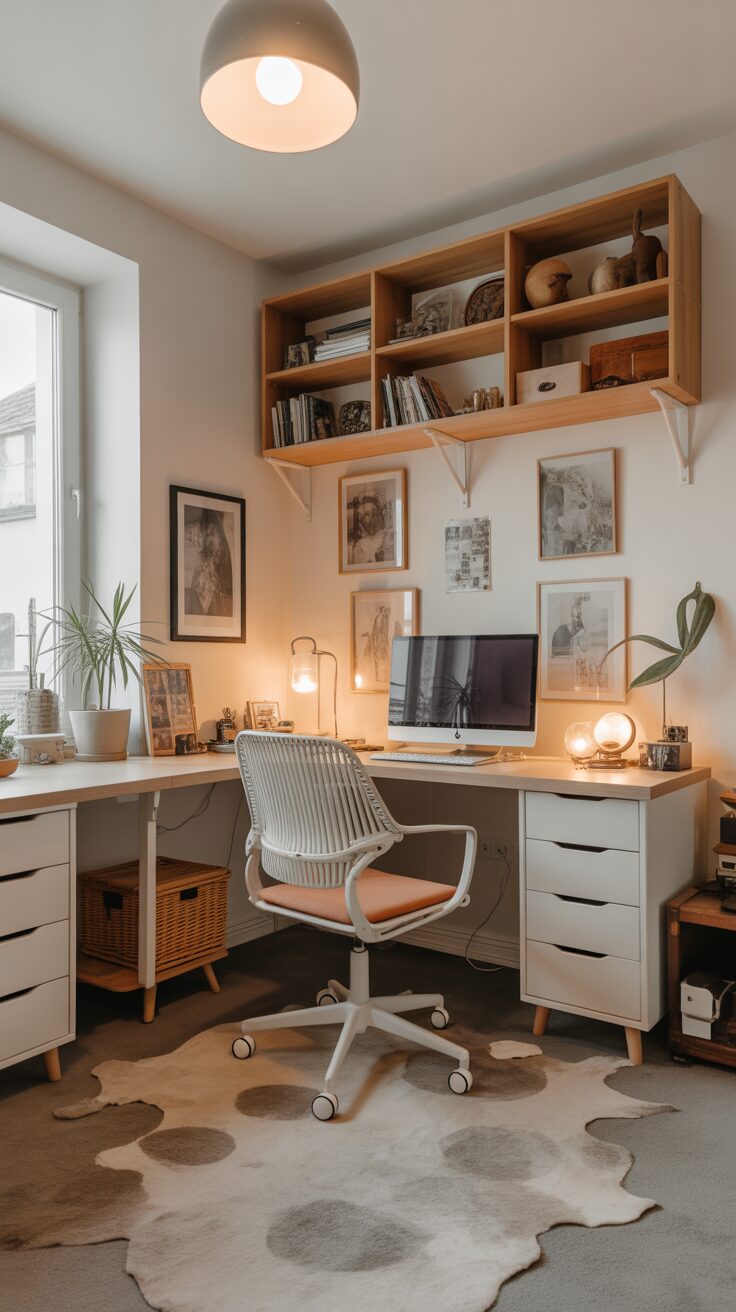15 Sewing Room Ideas for a Creative and Organized Space
15 Sewing Room Ideas for a Creative and Organized Space
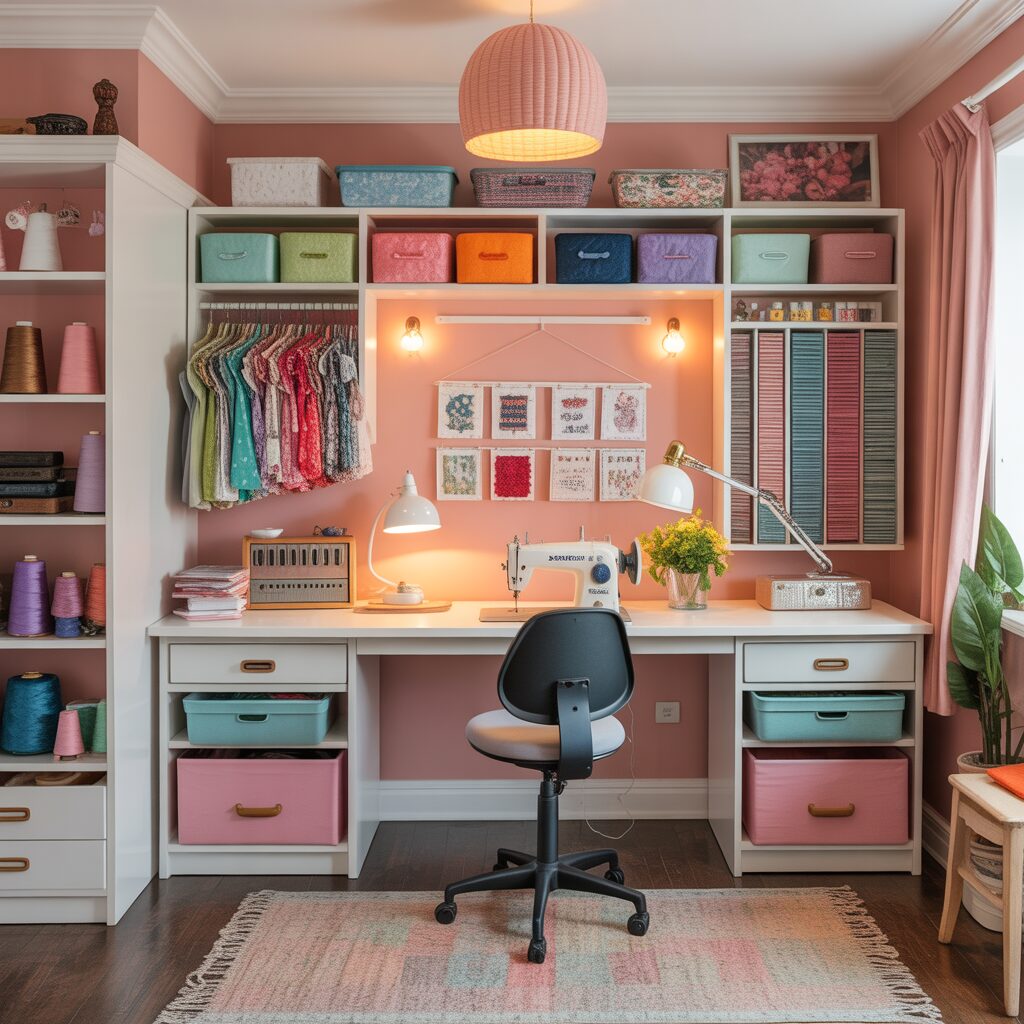
A sewing room should be more than just a workspace; it should inspire creativity, stay organized, and reflect your personality. Whether you are a professional seamstress or a hobbyist, designing a practical sewing space helps you enjoy the process even more. From clever storage to ergonomic layouts, every detail matters in keeping your projects smooth. A well-designed sewing room combines efficiency, comfort, and style. These 15 sewing room ideas will help you design a space that is both functional and inviting.
1. Efficient Work Table Setup
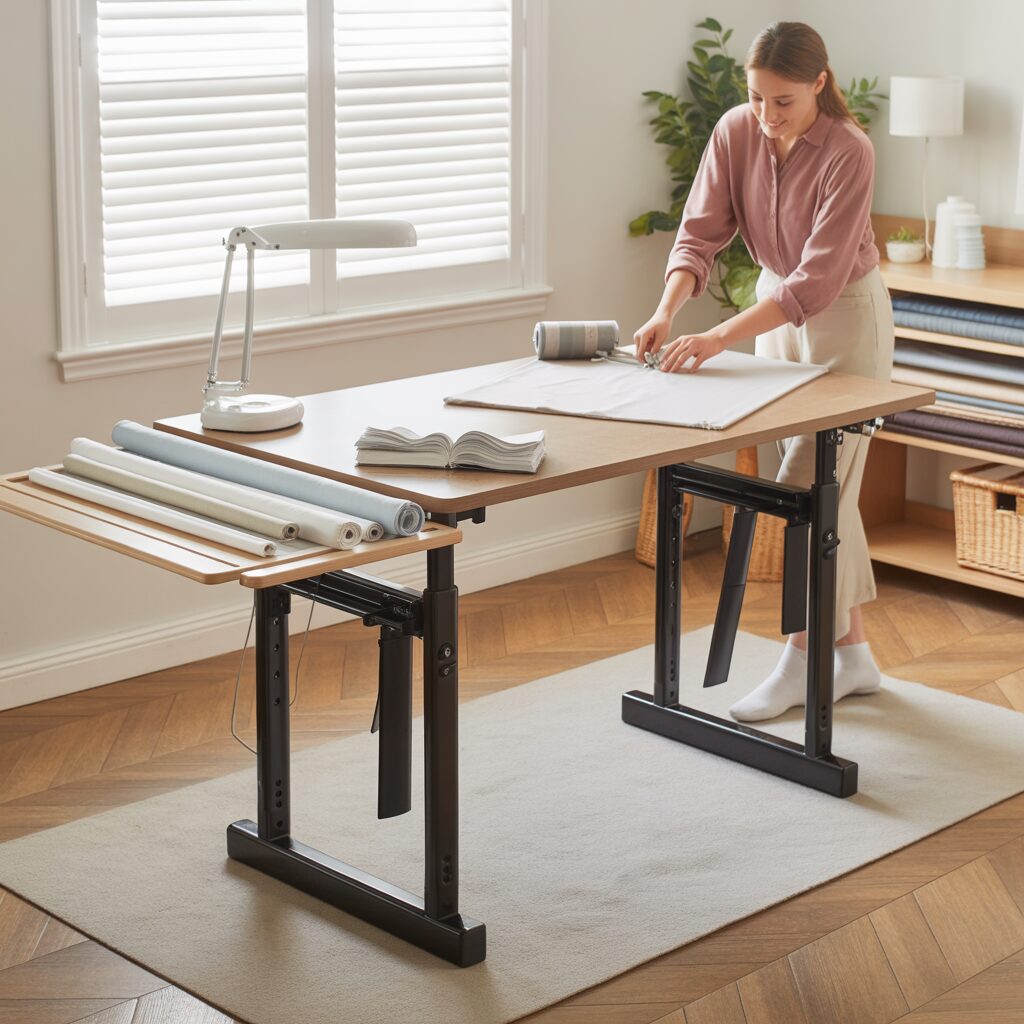
A sturdy, spacious work table is essential for cutting fabrics and assembling projects. Choose a table with adjustable height to maintain comfort during long hours. A clean surface allows better fabric handling and improves precision. Position it near natural light for maximum efficiency.
Pro Tip: Add foldable side extensions for extra space when handling large projects.
2. Smart Sewing Machine Placement
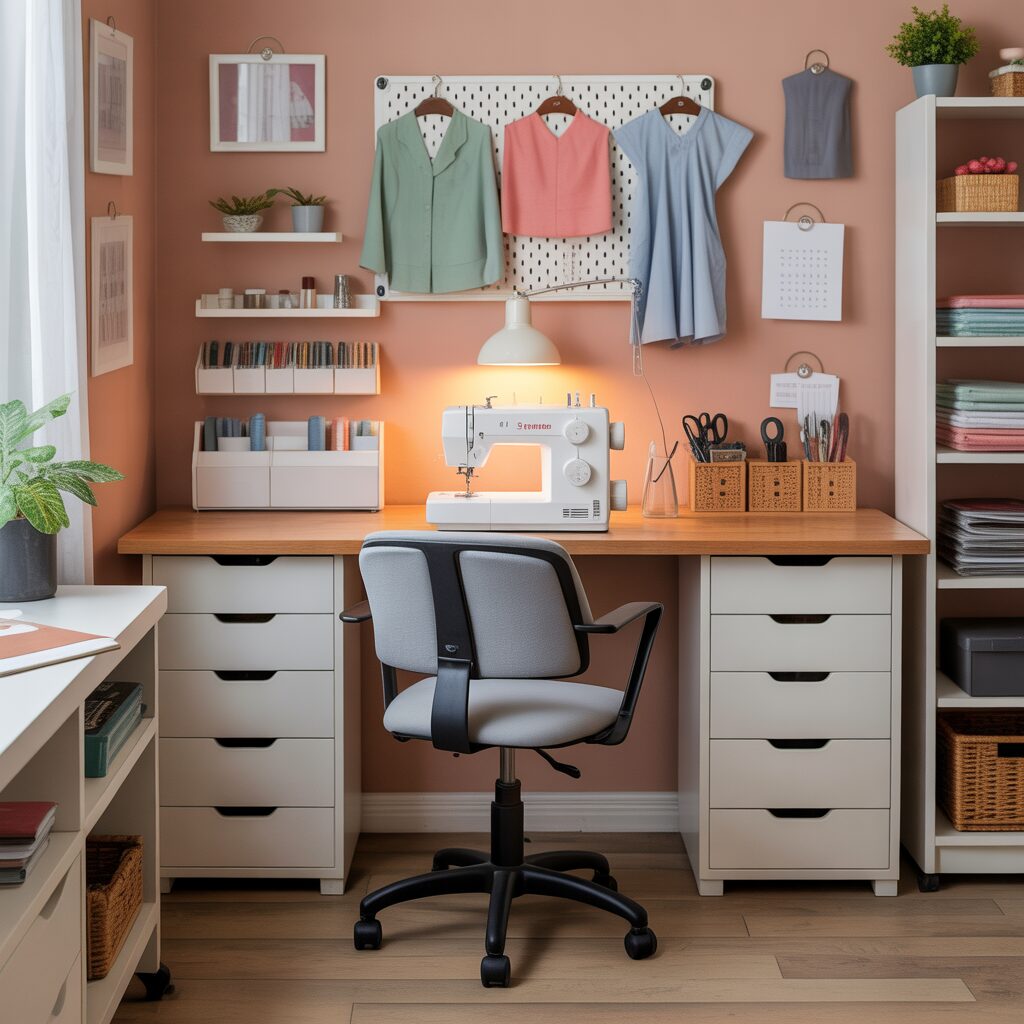
Keep your sewing machine on a stable desk that minimizes vibration. Place it at a comfortable height to prevent strain. Surround the area with drawers or organizers for tools and accessories. This setup ensures you can work efficiently without constant interruptions.
Pro Tip: Use a rolling chair with good back support for flexibility and comfort.
3. Fabric Storage Solutions
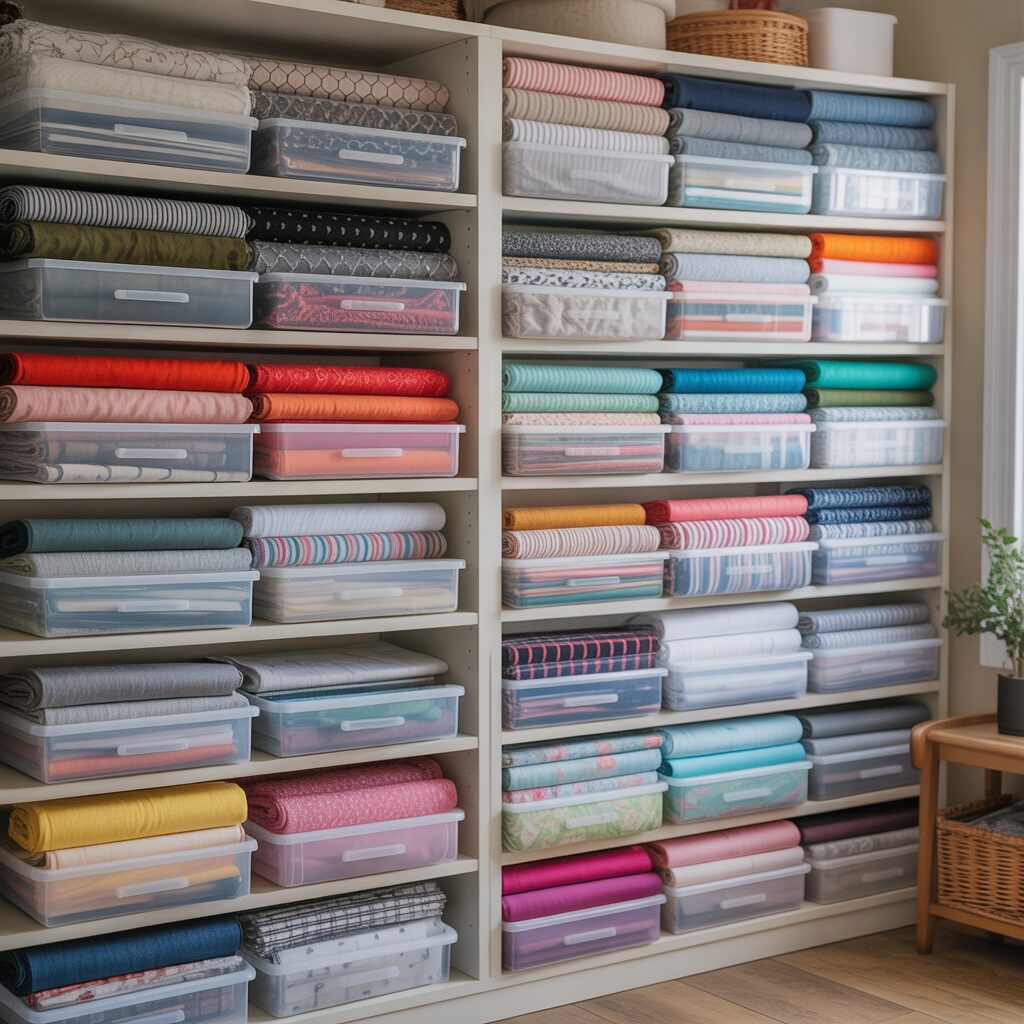
Neatly organizing fabric prevents wrinkles and keeps colors visible. Shelves, bins, or hanging racks help store different fabric types. Transparent containers make it easy to locate materials quickly. Organized storage also extends the life of your fabrics.
Pro Tip: Roll fabrics instead of folding to save space and reduce creases.
4. Thread Display Wall
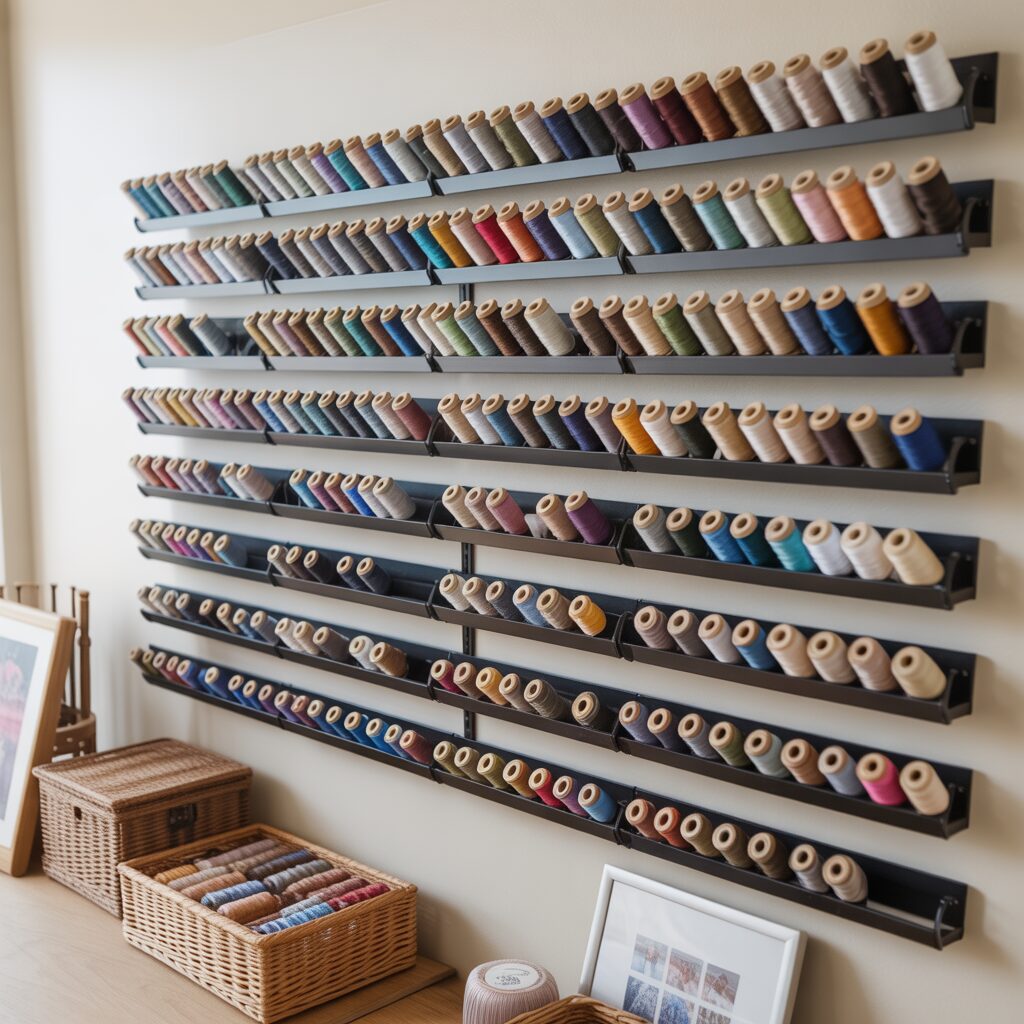
A wall-mounted thread rack keeps spools organized and within reach. It also doubles as a colorful display that adds charm to the room. This solution saves drawer space and prevents tangling. Matching thread colors becomes much easier when displayed visibly.
Pro Tip: Group threads by color family to make selection faster and more efficient.
5. Task Lighting and Overhead Lamps
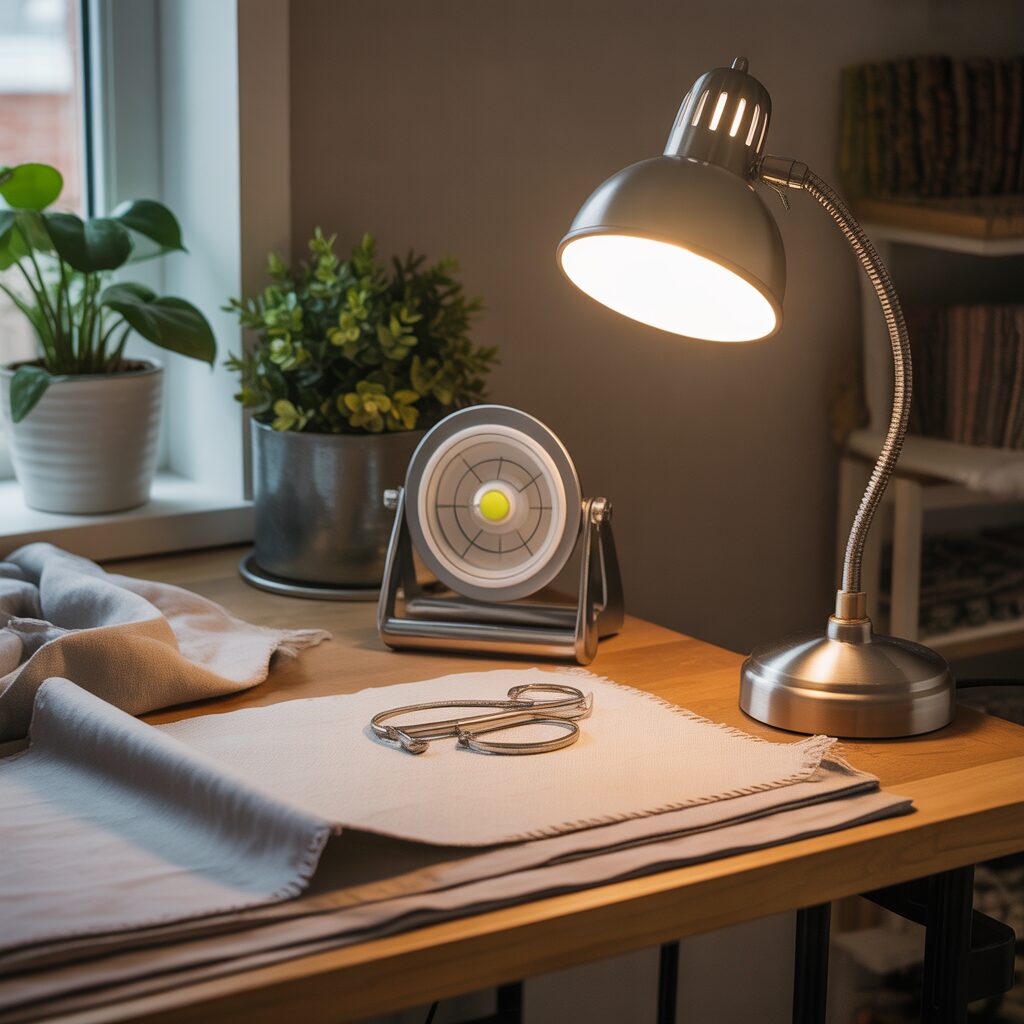
Good lighting is crucial for detailed stitching and cutting. Natural light is ideal, but overhead lamps and task lights ensure clarity even in the evening. Bright, focused light reduces eye strain and mistakes. Proper illumination also highlights fabric textures better.
Pro Tip: Choose daylight LED bulbs for accurate color matching.
6. Pegboards for Tools
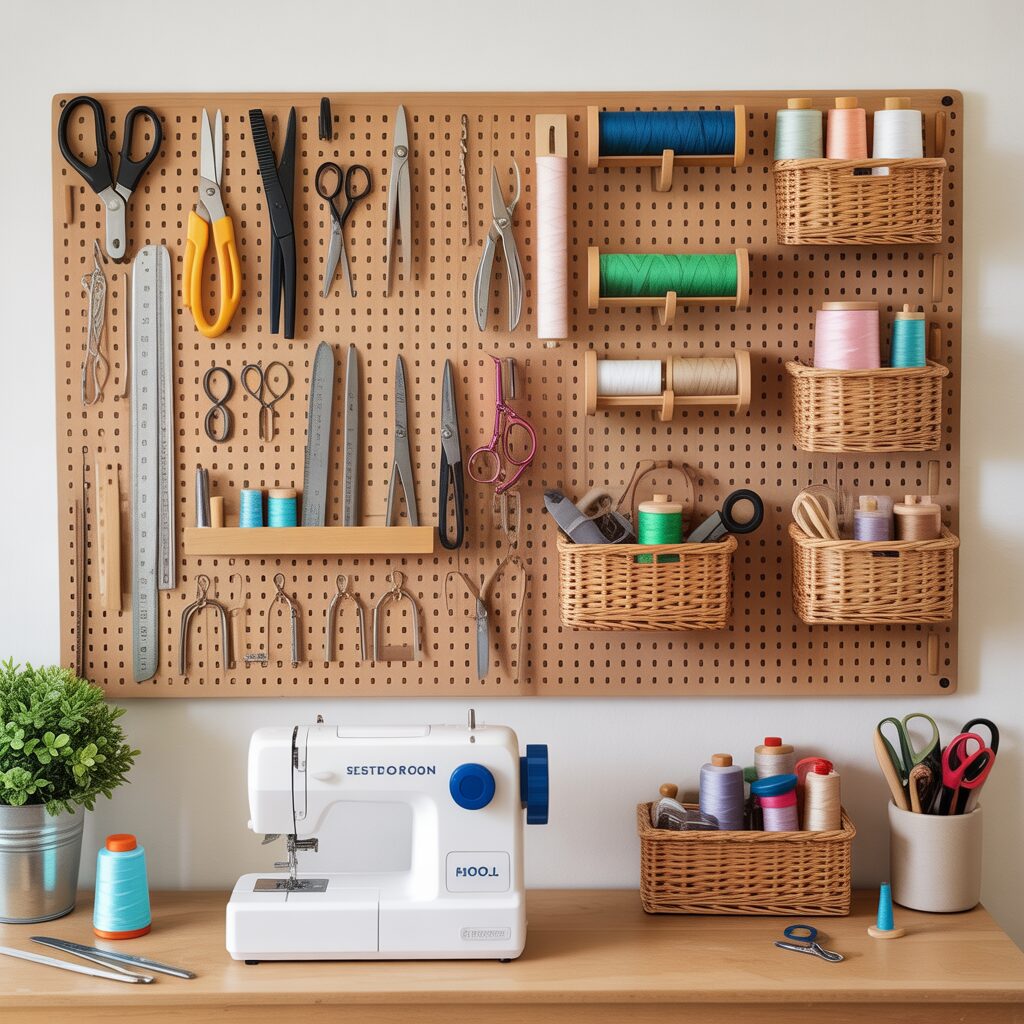
A pegboard above your work area keeps scissors, rulers, and other tools accessible. Customizable hooks and baskets maximize wall space. This layout keeps surfaces clutter-free while ensuring tools are always within reach. It adds both function and style to your sewing room.
Pro Tip: Outline tool shapes on the board to keep everything consistently organized.
7. Comfortable Seating
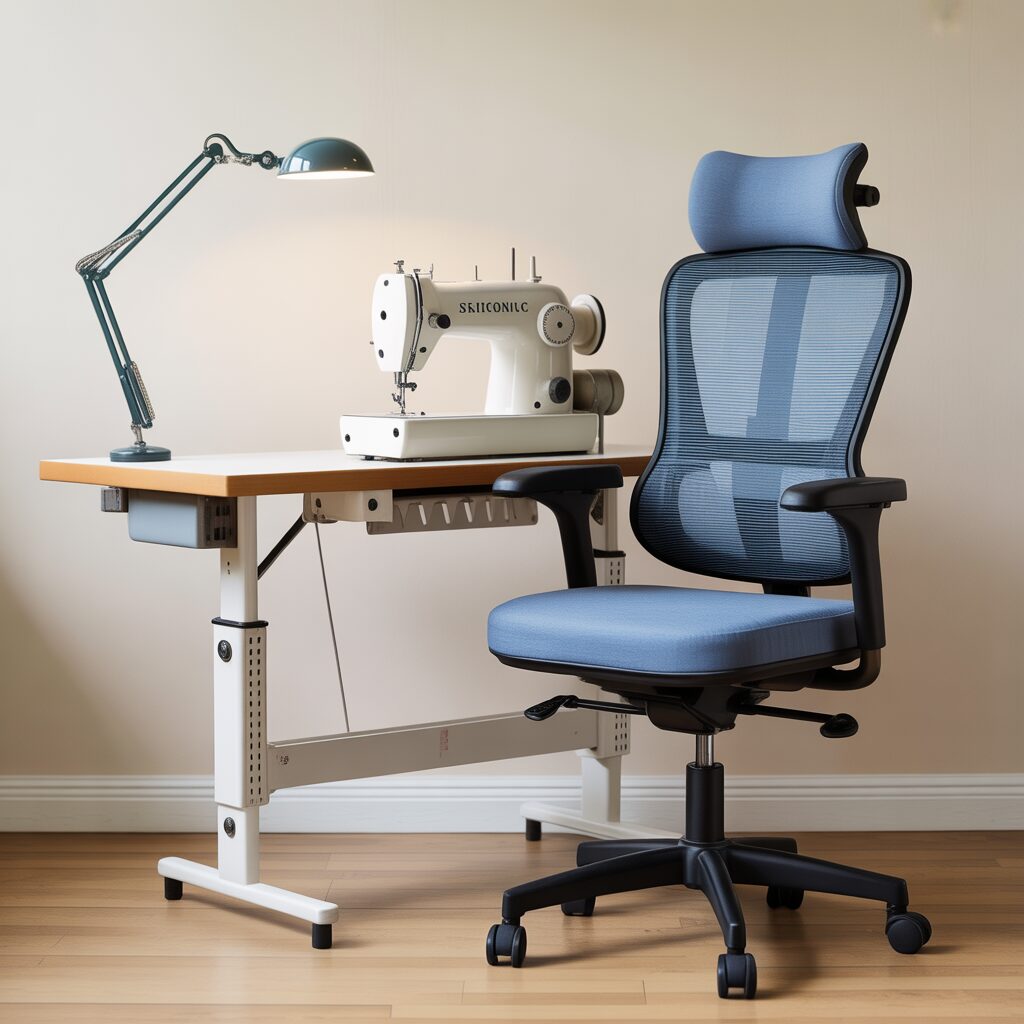
Comfortable seating makes long sewing sessions enjoyable. Choose an ergonomic chair that supports posture and movement. Adjustable seats allow better alignment with work tables. Investing in the right chair reduces back pain and fatigue.
Pro Tip: Add a small cushion or lumbar pillow for extra support during long hours.
8. Inspiration Board
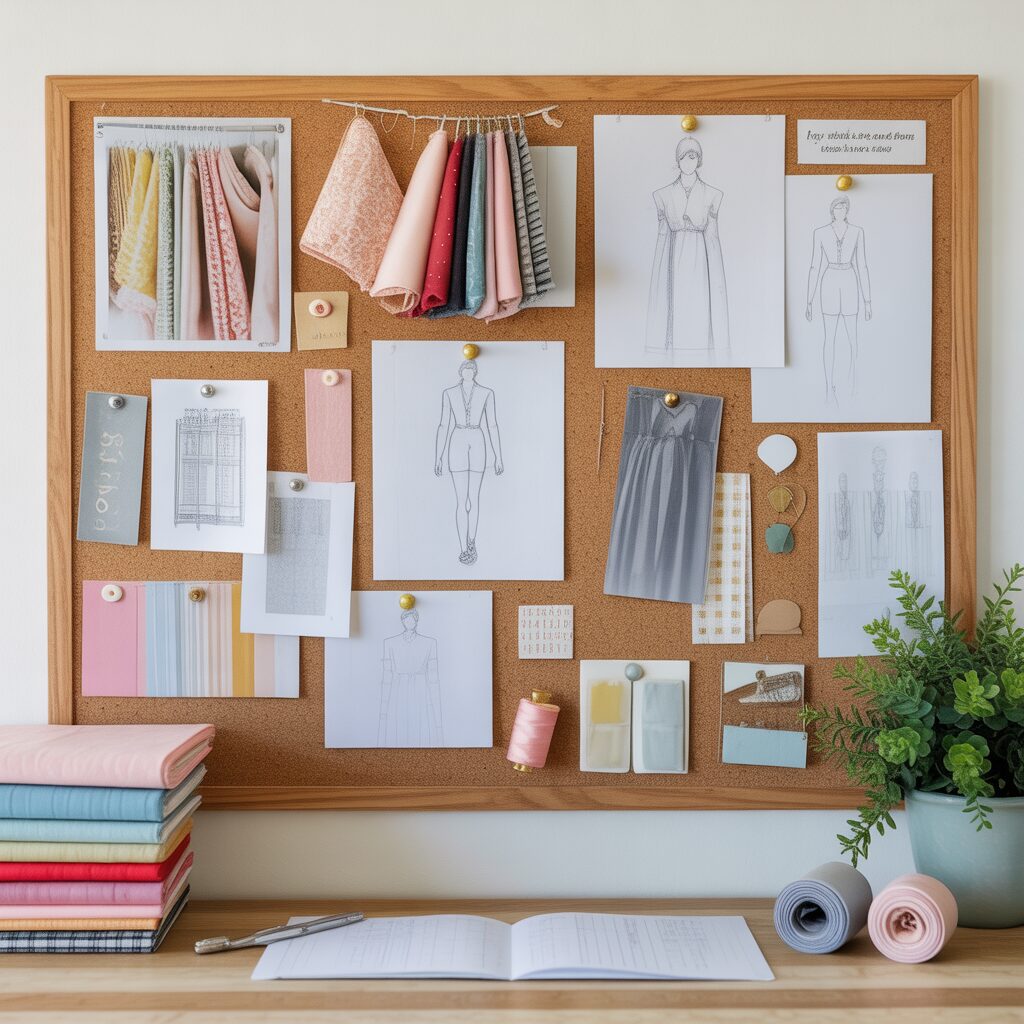
A corkboard or pinboard filled with sketches, fabric swatches, and ideas fuels creativity. It keeps inspiration visible and accessible while planning projects. Digital inspiration can also be printed and pinned for reference. The board becomes a personal touchpoint in your sewing room.
Pro Tip: Rotate your inspiration board regularly to stay motivated and fresh.
9. Rolling Storage Carts
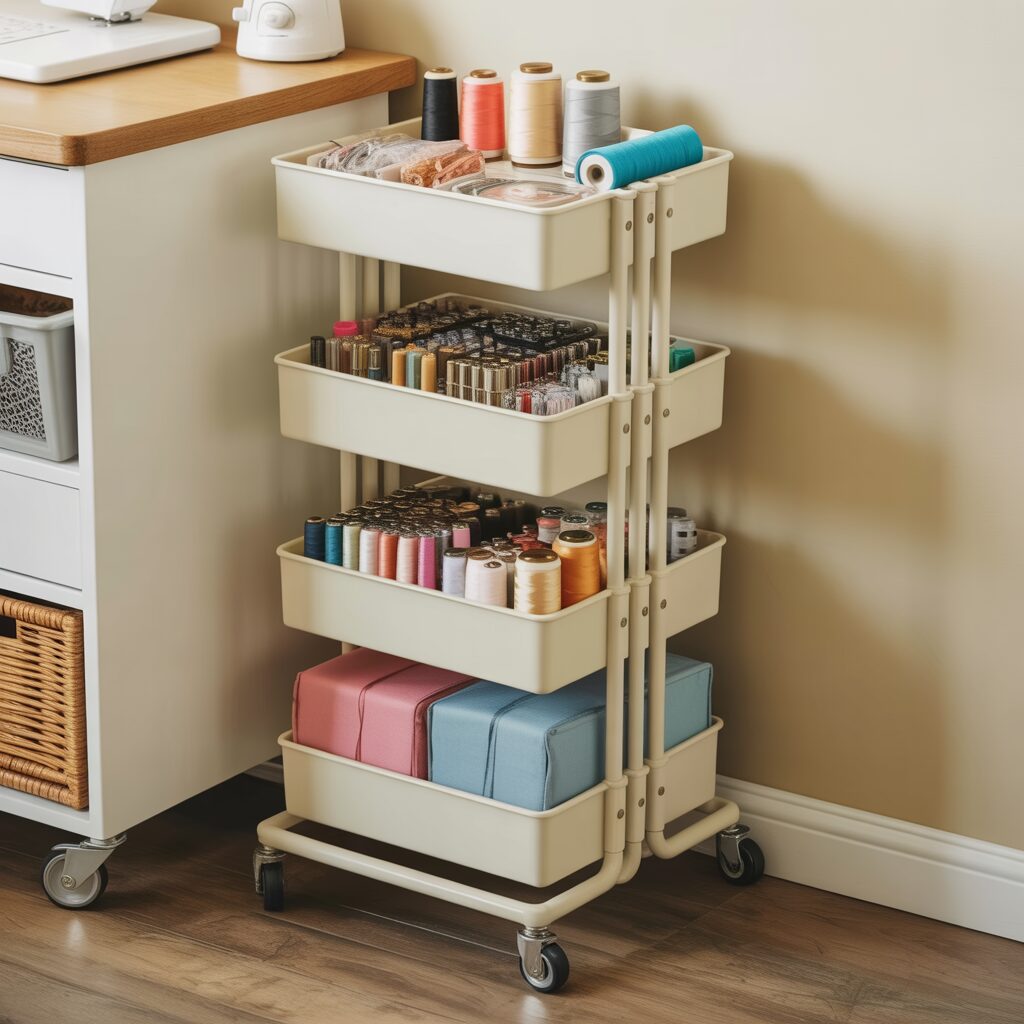
Mobile carts provide flexible storage that moves with you. They are perfect for keeping tools, trims, and smaller supplies nearby. Multiple tiers maximize vertical space while keeping essentials sorted. Rolling carts adapt well to both small and large sewing rooms.
Pro Tip: Assign each cart tier a category like threads, tools, or trims for easy access.
10. Cutting Mat Station
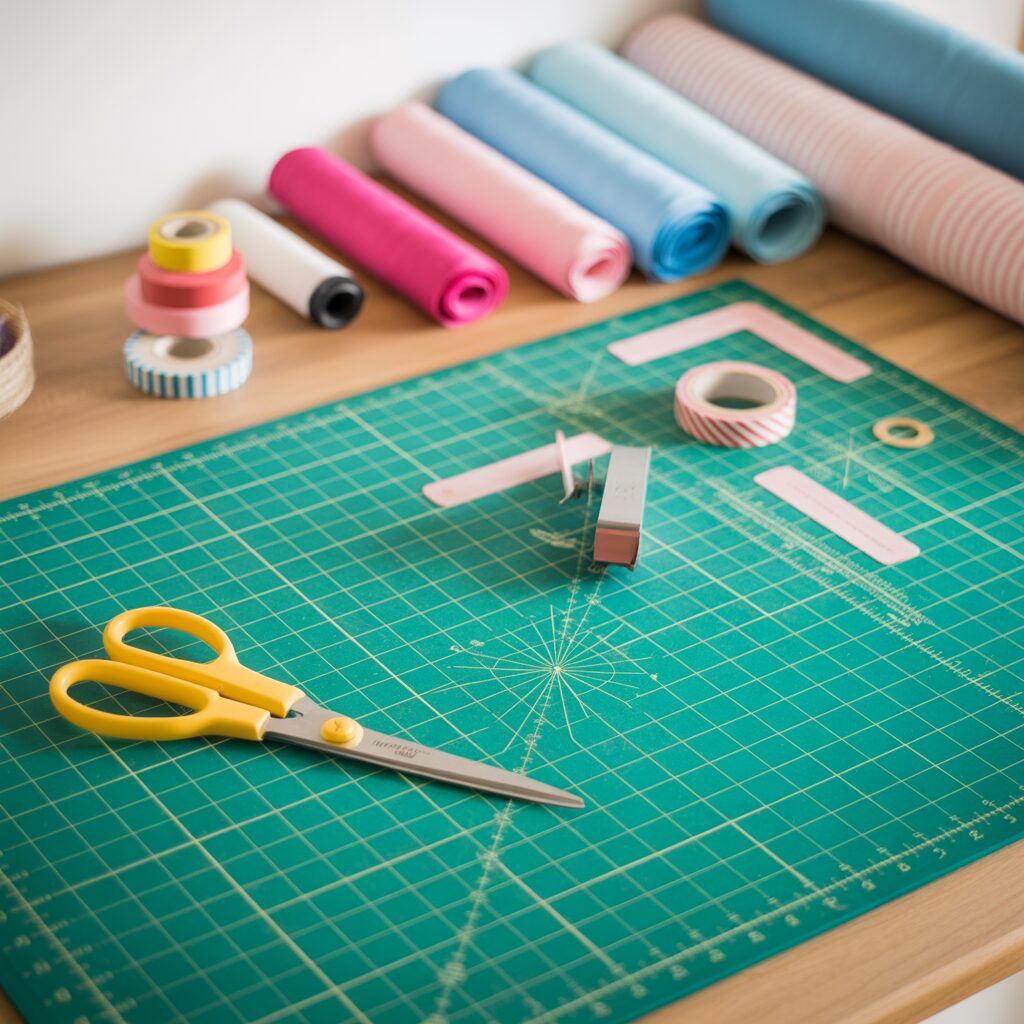
Dedicated cutting mats protect surfaces and improve accuracy. A large cutting mat placed on your worktable makes measuring and trimming easier. This setup speeds up cutting and reduces fabric waste. Durable mats also extend the life of your scissors and rotary cutters.
Pro Tip: Mark common measurements on your mat with washi tape for faster cutting.
11. Wall-Mounted Shelving
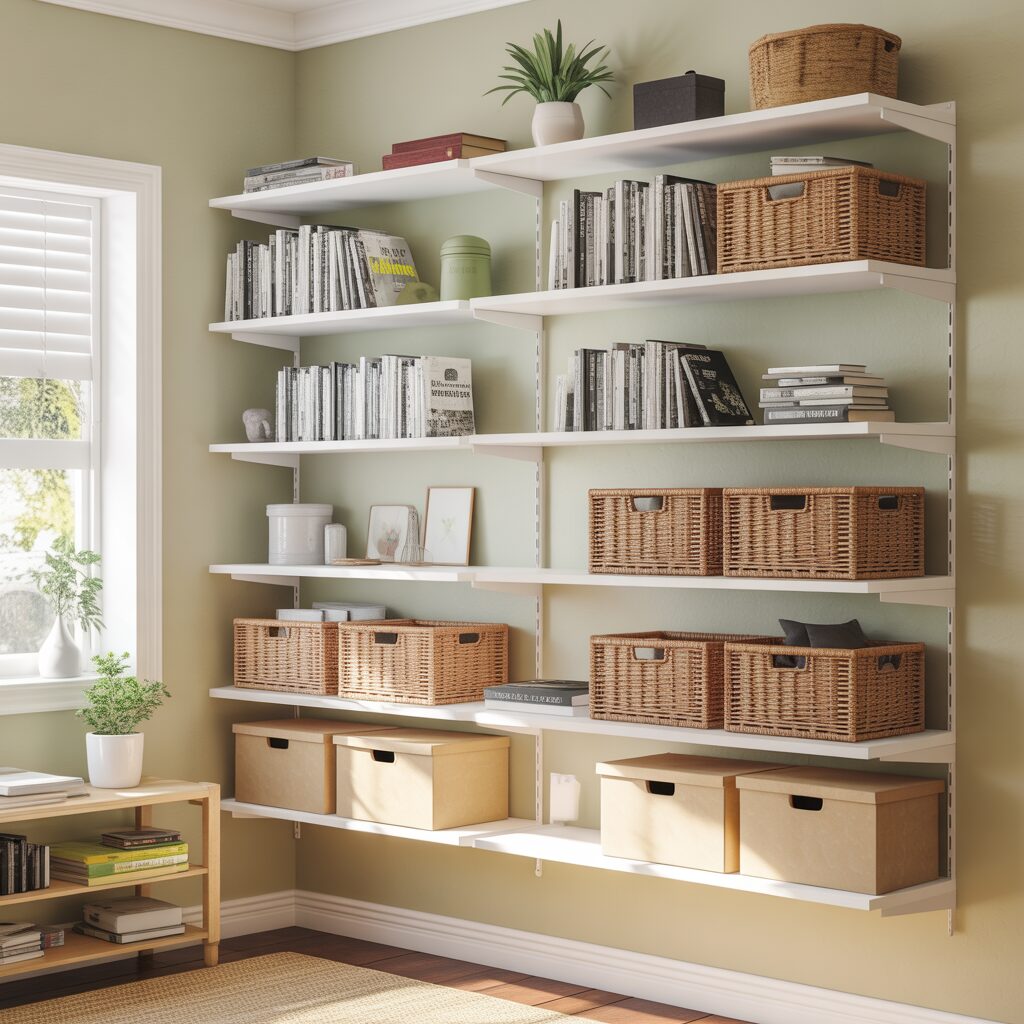
Wall shelves free up floor space while offering additional storage. They can hold boxes, books, or decor items that inspire creativity. Adjustable shelves allow you to customize based on your needs. Keeping items off the floor also makes cleaning easier.
Pro Tip: Use baskets on shelves to group small items neatly.
12. Ironing and Pressing Station
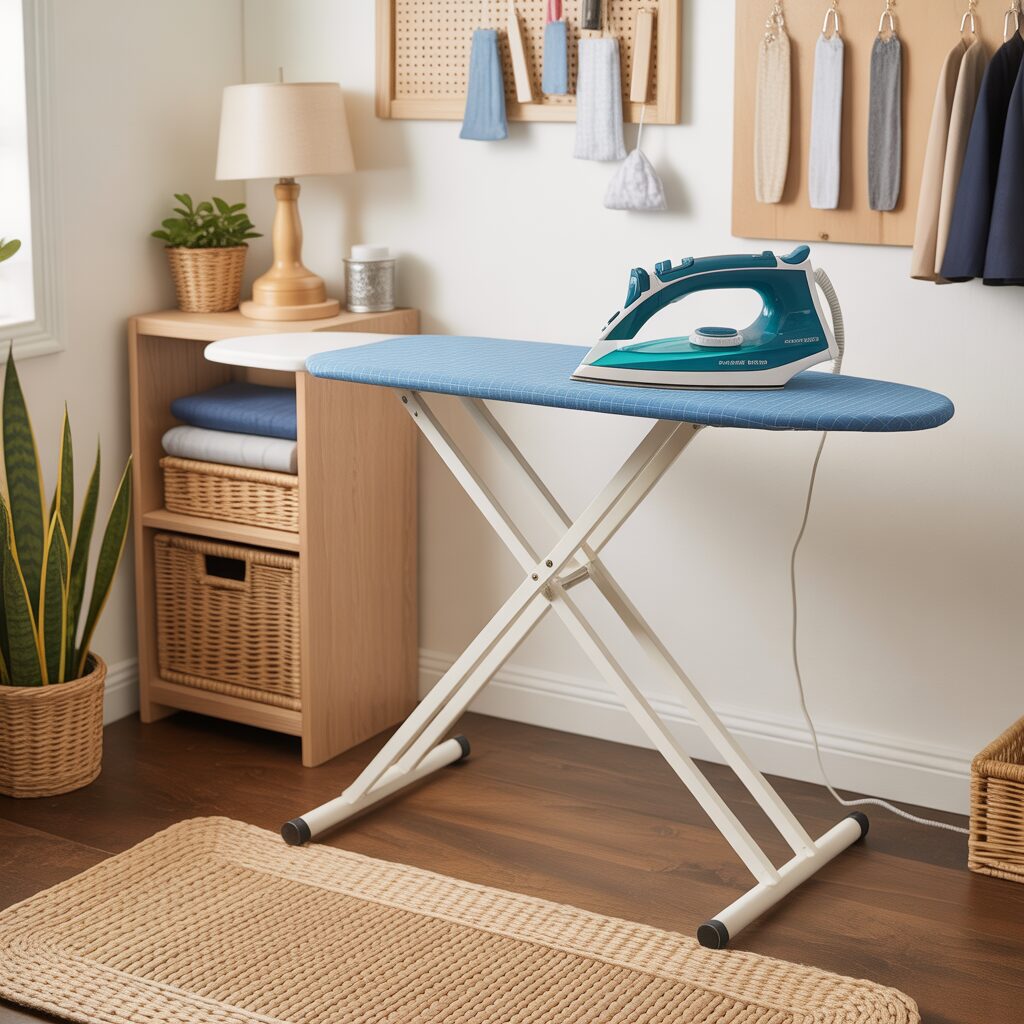
An ironing board within the sewing room saves time during projects. Pressing seams immediately improves the quality of finished garments. A compact board can fold away when not in use. Position it near your work table for efficiency.
Pro Tip: Use a heat-resistant mat for quick pressing of smaller items without needing a full board.
13. Small Accessories Organizer
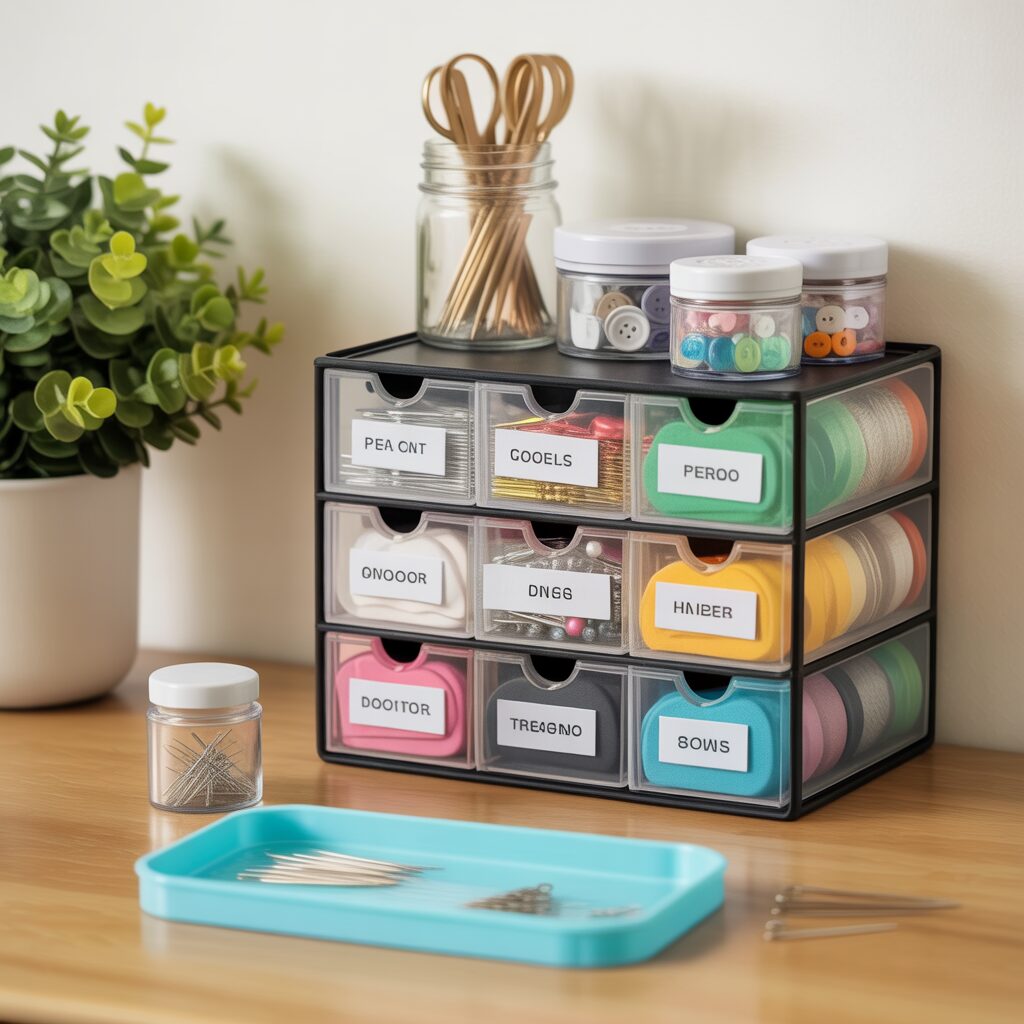
Pins, needles, and buttons can easily get lost without proper storage. A drawer organizer or divided containers keep them sorted. Clear containers or labeled jars help identify items quickly. This makes the sewing process smoother and stress-free.
Pro Tip: Keep a magnetic tray handy to collect stray pins and needles.
14. Creative Decor Touches
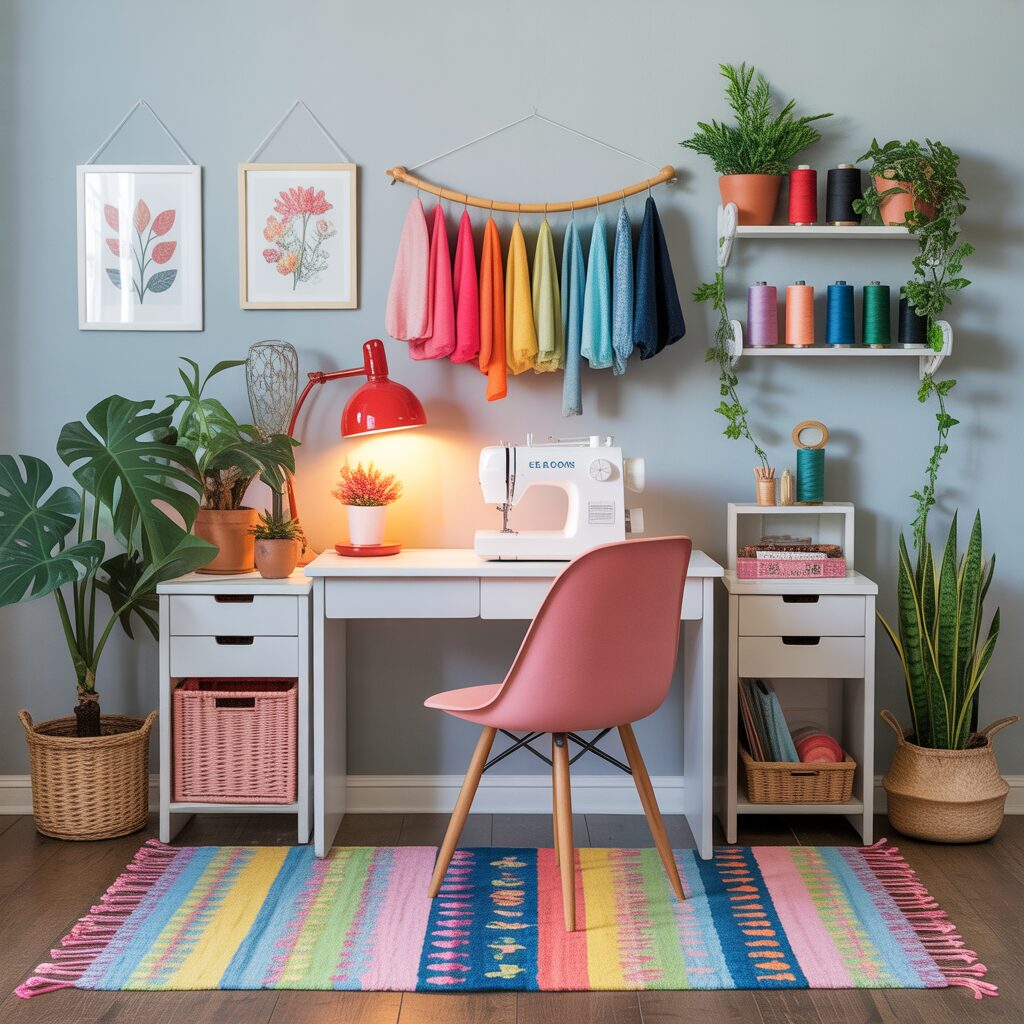
Adding personal decor makes the sewing room feel more inviting. Wall art, plants, or colorful rugs bring life into the space. Decor choices can also reflect your style and spark inspiration. A cozy environment encourages longer, more productive sessions.
Pro Tip: Choose decor that uplifts without cluttering the workspace.
15. Multipurpose Workspace
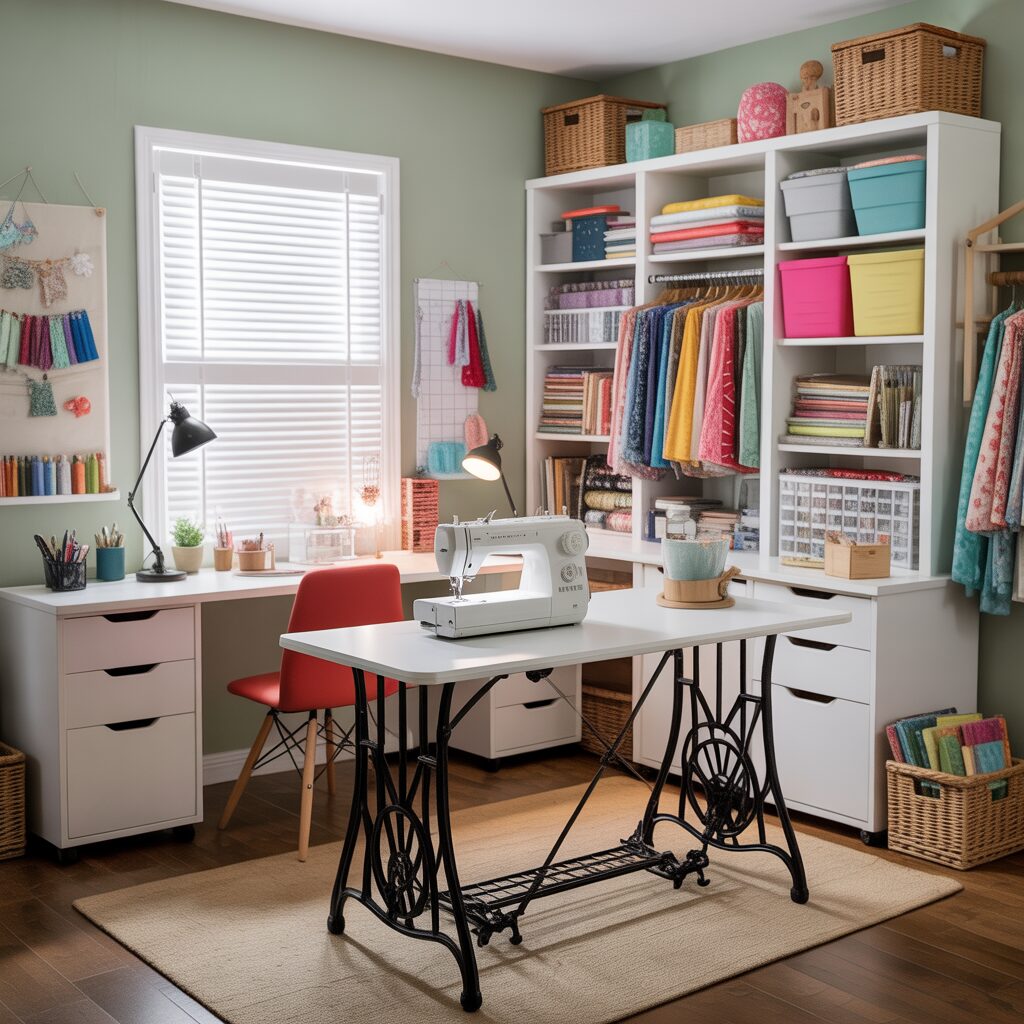
If your sewing room doubles as a craft or study space, design it for flexibility. Folding tables, convertible furniture, and hidden storage keep the room versatile. This ensures the space adapts to different needs. It also keeps the area functional for the entire household.
Pro Tip: Use labeled storage bins to easily switch between sewing and other activities.
Conclusion
A well-designed sewing room combines practicality with creativity, making it an inspiring place to work on projects. From fabric storage and tool organization to proper lighting and seating, every detail impacts your comfort and productivity. Adding personal touches ensures the space reflects your personality while staying efficient. With these sewing room ideas, you can create a workspace that keeps you motivated and organized for every project.
Would you like me to also create SEO-rich Instagram hashtags for each of these 15 H2 headings, so you can easily source images for Pinterest and Instagram?

